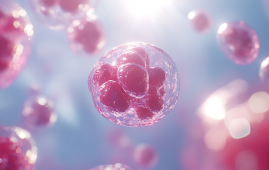

According to Jonathan Long, assistant professor of pathology at Stanford University, researchers have long been intrigued by the potential that exercise triggers diverse cells in our bodies to generate substances that promote human health.
If these molecules, also known as exerkines or exercise factors, can be identified and harnessed for pharmacological purposes, the theory goes, they may reduce the incidence of certain health problems such as obesity, heart disease, and diabetes, as well as improve athletic performance.
But that goal has remained elusive largely because it has been impossible to isolate exerkines from the blood, Long says. “If you analyze whole blood, you can only see the most abundant substances in it and everything else is invisible.”
Long and his colleagues have now devised a new technology that can scan far deeper into the blood to identify cell-secreted chemicals. The approach also indicates which cell types create specific chemicals, which is important for understanding the impact of exercise in promoting health.
Long’s unique strategy has recently resulted in a Cell Metabolism article illustrating the several ways in which exercise affects protein production by 21 different cell types in mice. There were a few surprises as well.
First, the sheer number of proteins whose presence in the blood changed in response to exercise was larger than anticipated. Indeed, the team found nearly 200 different exercise factors whose expression was either up- or down-regulated by the 21 cell types. “This means that the effects of physical activity are very widespread across many tissues and organ systems,” Long says. “We’re only just starting to understand that complexity.”
Second, the cells that were most responsive to physical activity were a poorly understood type of cell that is named for a particular protein receptor (Pdgfra) and is found in many different tissues and organs. In fact, the usual suspects such as muscle, bone, and liver cells, only had moderate responses by comparison, Long says. “If we really want to understand the exercise response, we can’t just focus on muscle and bone and the other tissues we associate with exercise,” he says. “We have to look much more widely.”
The researchers were also shocked to discover that only liver cells release numerous members of the carboxylesterase family of proteins after exercise. Researchers had previously focused on the roles of these proteins within a cell and demonstrated that they were advantageous to metabolic health, but they had not seen a probable involvement in the bloodstream.
To better understand their role, Long’s team engineered mice that secreted heightened levels of carboxylesterase proteins from the liver without exercise. And, it turned out, these mice resisted weight gain on a high fat diet and exhibited improved endurance on a treadmill. “These carboxylesterases are sufficient to confer some of the metabolic benefits of physical activity without the animals themselves exercising,” Long says.
The study raises numerous follow-up questions. What role do Pdgfra cells play in various tissues, and why do they respond to exercise? Could other exerkines, such carboxylesterases, have important anti-inflammatory or other positive effects on bones, the heart, the immune system, and the brain? Do the levels of blood-carried carboxylesterases in humans vary in response to exercise like they do in mice?
Long expects that this discovery will increase our understanding of cell-to-cell communication on a fundamental level. But, from a 30,000-foot perspective, there’s another reason to conduct these tedious research studies: Unfulfilled promise of “exercise as medicine.”
We know exercise has a therapeutic effect in many of the most chronic and debilitating diseases, but exercise is not like a medicine yet, Long says. That’s because most medicines consist of well-defined molecules with well-defined mechanisms of action, pharmacokinetics and pharmacodynamics, and adverse effects. By contrast, none of those things are well-defined for exercise, he says. “In the long term we want to understand the molecules and cells associated with exercise at high resolution so that exercise as medicine can become a reality.”
more recommended stories
 Coffee and Cognitive Function: Evidence Review
Coffee and Cognitive Function: Evidence ReviewA new narrative review in Cureus.
 Colorectal Cancer Screening Rates Low in Adults 45–49
Colorectal Cancer Screening Rates Low in Adults 45–49Recent UCLA research reveals that colorectal.
 Gut Immune Cells and Long-Lasting Antiviral Protection.
Gut Immune Cells and Long-Lasting Antiviral Protection.Breakthrough Findings on How Gut Immune.
 Mild Pancreatic Duct Dilatation Signals Higher Cancer Risk
Mild Pancreatic Duct Dilatation Signals Higher Cancer RiskEarly Structural Changes Offer Critical Clues.
 How the Uterus Senses Force During Labor: New Insights
How the Uterus Senses Force During Labor: New InsightsA new study published in Science.
 Fat-Free Mass and Brain Outcomes in Preterm Babies
Fat-Free Mass and Brain Outcomes in Preterm BabiesEarly Fat-Free Mass May Hold the.
 How Hormones Shape Dopamine-Driven Learning
How Hormones Shape Dopamine-Driven LearningNYU Study on Hormones and Cognitive.
 Protein Pair Guides Chromosome Alignment in Mitosis
Protein Pair Guides Chromosome Alignment in MitosisKey Points A joint research team.
 Intensive mind-body retreat rapidly alters brain function
Intensive mind-body retreat rapidly alters brain functionAn intensive mind-body retreat combining meditation,.
 Citrus and Grape Compounds Help Prevent Type 2 Diabetes
Citrus and Grape Compounds Help Prevent Type 2 DiabetesA new clinical trial highlights the.

Leave a Comment